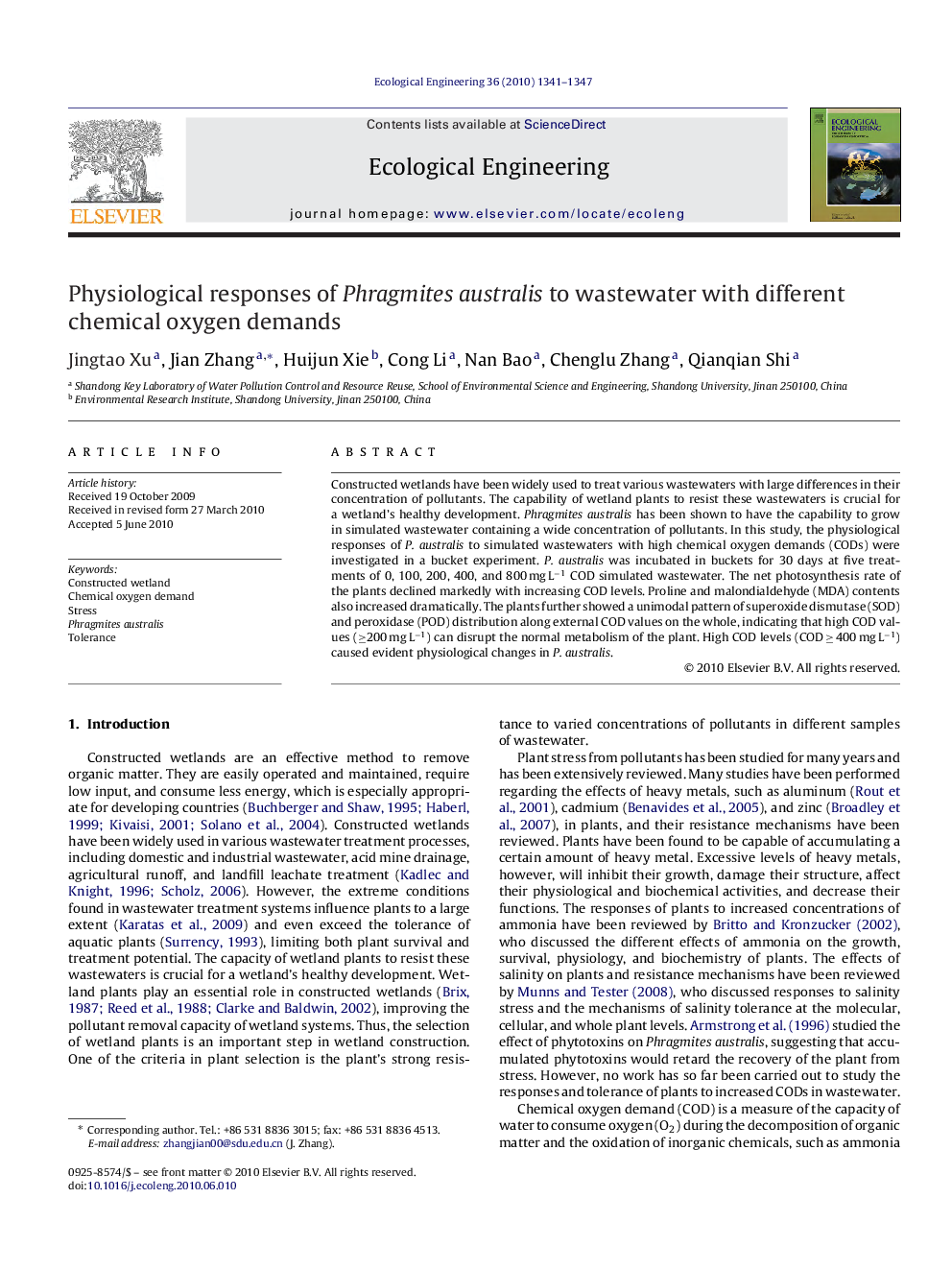| Article ID | Journal | Published Year | Pages | File Type |
|---|---|---|---|---|
| 4390581 | Ecological Engineering | 2010 | 7 Pages |
Abstract
Constructed wetlands have been widely used to treat various wastewaters with large differences in their concentration of pollutants. The capability of wetland plants to resist these wastewaters is crucial for a wetland's healthy development. Phragmites australis has been shown to have the capability to grow in simulated wastewater containing a wide concentration of pollutants. In this study, the physiological responses of P. australis to simulated wastewaters with high chemical oxygen demands (CODs) were investigated in a bucket experiment. P. australis was incubated in buckets for 30 days at five treatments of 0, 100, 200, 400, and 800 mg Lâ1 COD simulated wastewater. The net photosynthesis rate of the plants declined markedly with increasing COD levels. Proline and malondialdehyde (MDA) contents also increased dramatically. The plants further showed a unimodal pattern of superoxide dismutase (SOD) and peroxidase (POD) distribution along external COD values on the whole, indicating that high COD values (â¥200 mg Lâ1) can disrupt the normal metabolism of the plant. High COD levels (COD â¥Â 400 mg Lâ1) caused evident physiological changes in P. australis.
Related Topics
Life Sciences
Agricultural and Biological Sciences
Ecology, Evolution, Behavior and Systematics
Authors
Jingtao Xu, Jian Zhang, Huijun Xie, Cong Li, Nan Bao, Chenglu Zhang, Qianqian Shi,
